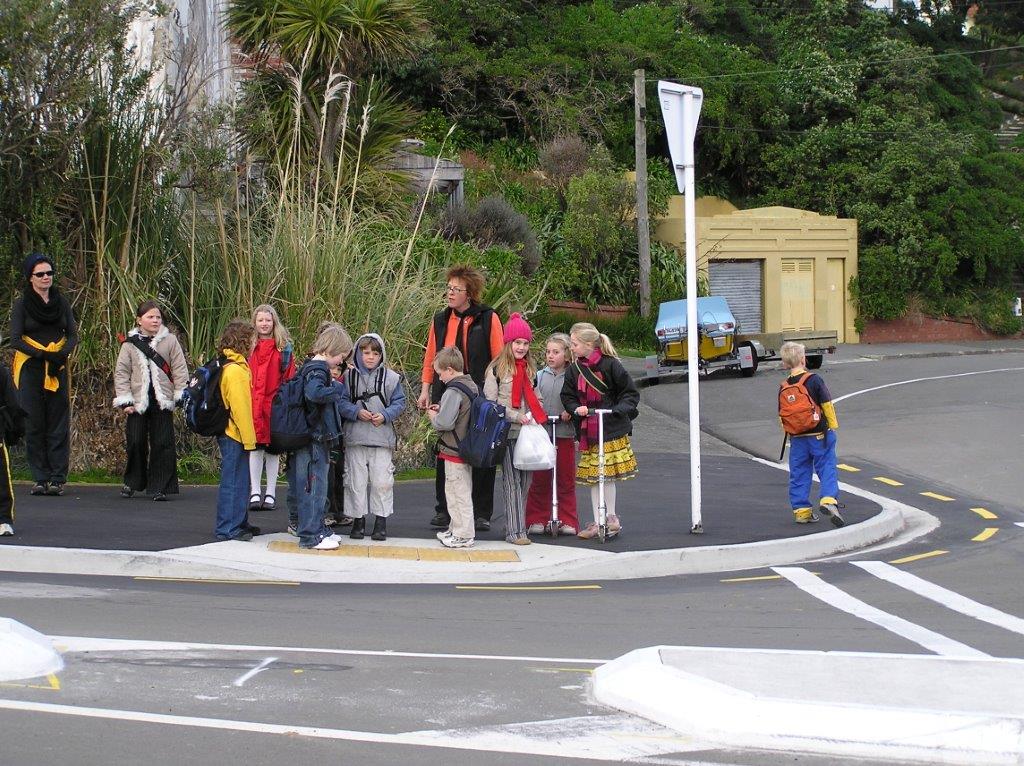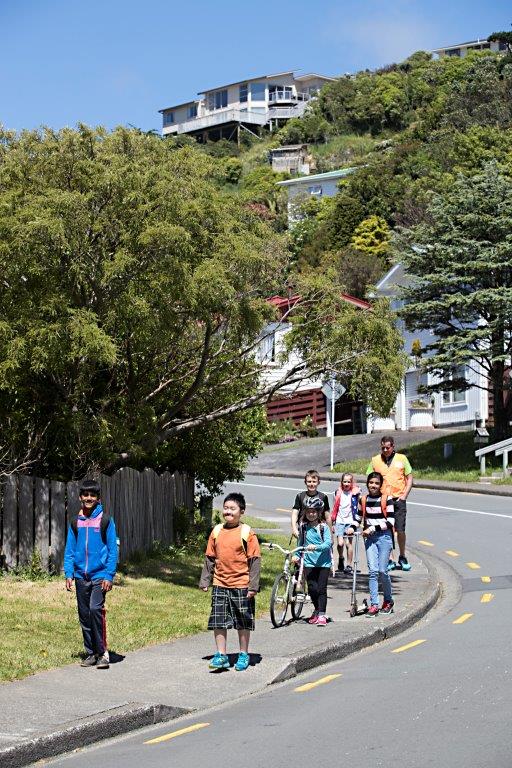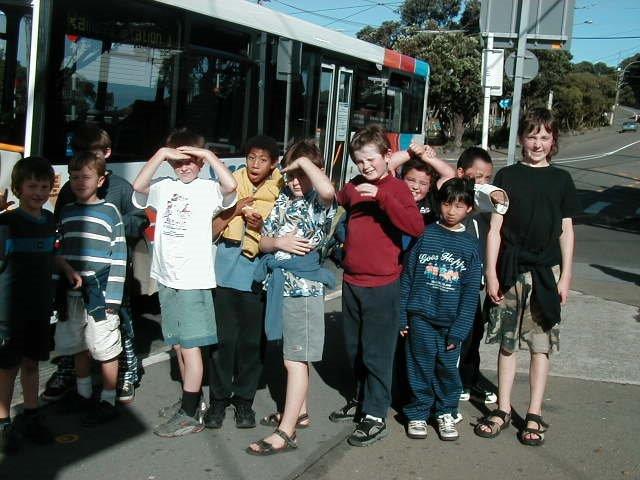We recommend 24 ways to improve HIKOI KI A MĀTAURANGA - WALKING TO SCHOOL!
Seven walking advocates, activists, practitioners, planners and academics have been working together on the important issue of how New Zealand can reverse the national decline in walking to school. We’ve come up with 24 recommendations that we’ve sent to the Associate Minister of Transport, Ms Julie Anne Genter. We’ve also copied in Ministers of related portfolios such as health, education, sport and recreation.
Walking to school has positive impacts on children’s and adolescents’ mental and physical health and alertness now and into the future, increases social connectedness, reduces congestion and air pollution.
Data quality is variable at all levels for the walking journey to education. The 2018 census asked about the mode of travel to education for the first time. Currently there are 2,531 schools in New Zealand. Some schools and Councils strongly support active travel.
However, walking by those aged 5-14 years decreased from 1.5 hours per week in 1989/90 to 1 hour in 2003 and has stayed the same since (MoT Sept 2015). Walking to school has declined from 43% 1989/90 to 29% in 2014 (MoT Household Travel Survey). The annual Health Survey shows a higher figure of 43% usually walking to school.

The current New Zealand Government has expressed a strong commitment to improving wellbeing (particularly for children), road safety, equity and reducing carbon. Walking to school covers all these bases but is not sufficiently funded nor prioritised. While some schools are already easy for most students to walk to, others need infrastructure improvements, lower speed limits, plus support of volunteers for Walking School Buses (for 5 to 8 year-olds), Kea crossing points and keeping school drop-off areas well managed.
Support for “active transport” often translates into cycling-only initiatives such as Bike-Ready and Bikes in Schools. Such programmes are necessary and welcome but do nothing for walking. Walking has additional benefits in that students can socialise more easily with peers as they walk or spend quality time with parents or care-givers. Walking through or alongside parks, gardens and reserves gives a “daily dose of nature” with specific mental health benefits. Walking is an easy step for the very inactive.
If children have the choice to walk safely to school, then parents and care-givers have more choices too and may walk, cycle or take public transport rather than continuing to drive, “drop the kids” and proceed to work by car. A measure of school travel induced congestion is how much quieter our roads are in the non-summer school holidays, noting that part of this may be parents’ changed travel or holiday patterns.
While many drives to school are quite short, the emissions profile, for NOx, particulates and COx, is disproportionately high as these are usually cold starts that may be wholly avoidable. Congestion at the school gate also discourages other families from letting their children walk to school.
NZ has welcomed the WHO Global Action Plan for Physical Activity and ratified the Paris Climate Agreement. Walking is an easily achievable and affordable part of daily physical activity, with many other benefits. The recent report ‘Turning the Tide1’encourages active travel for all ages and trip purposes. It recommends doubling walking journeys overall.
Living Streets Aotearoa has consistently emphasised the benefits of more people choosing to walk more often since 2002. Campaigns such as the Yellow Feet (against car parking on footpaths) the Green Card (about overhanging vegetation) and Footpaths for Feet are highly relevant for Walking to School. Our executive members wish to be closely involved in developing Hikoi ki a Mātauranga - Walking to School.

Living Streets Aotearoa - Recommendations to the Government
To ensure over 50% of children and adolescents usually walk all or part of their journey to school by 2025.
Targets
Central Government, through its relevant ministries and agencies, actively and consistently supports students walking to school and legislates for targets to be set and monitored at regional, city and district levels.
National targets are set, and monitored annually, for increasing rates of students walking to school, recognising that distance is a challenge for some rural schools, schools of special character and high schools.
Councils measure, set and monitor targets for walking to school. If they set overall active travel targets, walking, scooting and cycling must be measured separately to assess effectiveness of different interventions.
Steering Group
Central Government establishes a cross-government (Education, Health, Transport, Sport and Recreation) steering group to oversee a national Walking to School NZ programme including academia, local government (through LGNZ or TRAFINZ), Sport NZ and Living Streets Aotearoa. The programme of promotion, co-ordination and monitoring will enhance existing initiatives and help focus transport investment.
Travel Plans and Policies
Travel plans are required for all schools, with Travel Plan co-ordinators co-funded by central and regional/unitary Councils, resourced from the GPS Walking and Cycling funding category.
Urban planning and new school locations consider Walking to School.
Students with disabilities are enabled to use footpaths and public transport.
Kea crossing wardens, Road Patrollers and Walking School Bus coordinators are valued.
Safety
There are zero deaths or serious injuries for students walking to and from school.
Urban schools have 30kph speed limits, safe crossings and footpaths for a minimum 300m radius for primary and 1km for intermediate and secondary schools, including access to nearby bus or train stops.
Every rural school has safe access to buses and safe crossings with time-based speed limits before and after school. The bus passing limit of 20kph is promoted and enforced.
Regulations enable good practice such as car-free zones at school start and finish times.
Any school staff, visitor and parent car parking is safely segregated from pedestrian entrances.
Cycling infrastructure is designed not to impede the safety or comfort of students on foot.
Community school safety audits are funded as part of School Travel Plans so students and local communities are involved together with transport professionals in designing walking-friendly safe routes to school.
Promotion
Promotional material for Walking to School initiatives, including media and school resources, is funded at a national, regional and local level, based on best practice such as Living Streets UK examples updated with the NZ context.
Promotional material includes diversity of gender, ethnicity, age, physical ability and family structure.
Wider active travel advocacy at all levels ensures that walking is included in images and planning, as well as cycling and scooting.
Promotion includes media and in-school resources developed from NZ and overseas initiatives.
Basics
Every student has appropriate shoes, raincoat and backpack.
Every school has appropriate storage for outdoor shoes and coats.
Parents and caregivers enjoy quality time together walking younger children to school.
Curriculum
Teachers receive useful curriculum materials such as regularly updated Feet First and Active Travel Action material but are not expected to organise or coordinate delivery of safety initiatives, travel plans or walking school buses. Promotional material, such as a remodelled WOW from Living Streets UK, is redesigned for the NZ context. In-school active transport planning would be the responsibility of the new “school physical activity advisors” funded in Budget 2019.
Innovation
There is funding allocated to trial innovative pilots as well as following successful models tried and tested in New Zealand and overseas. Leamington School’s social mapping is a good example.
Advisory Group for development of Walking to School recommendations
Ellen Blake, Tumuaki Tuarua, Living Streets Aotearoa
Isla Day, Students Strike for Climate SS4C
John Lieswyn, MET, PTP | Director, Senior Transport Planner, ViaStrada, Christchurch
Susan Hutchinson-Daniel, Travel Choice Co-ordinator,Greater Wellington Regional Council
Dr Sandra Mandic,Associate Professor, Active Living Laboratory, School of Physical Education, Sport and Exercise Sciences, University of Otago
Dr Melody Smith, Co-Associate Head (Research), School of Nursing, University of Auckland,
Celia Wade-Brown, National Secretary, Living Streets Aotearoa
Notes
Real Driving Emissions and Cold Starts
http://europa.eu/rapid/press-release_MEMO-17-2821_en.htm RDE Act 3: As a third step, Member States in the TCMV adopted on 20 December 2016 the Commission proposal to extend RDE testing to cover particle number (PN) emissions for all new vehicle types by September 2017and for all new vehicles by September 2018. These very small but cancerous particles exist in diesel cars as well as petrol cars with direct injection technology. Under RDE Act 3, the Commission also fine-tuned the testing methods to take into account that short city trips starting with a cold engine generate most city pollution.
WHO Global Action Plan for Physical Activity
https://apps.who.int/iris/bitstream/handle/10665/272722/9789241514187-eng.pdf
Regular physical activity is proven to help prevent and treat non-communicable diseases (NCDs) such as heart disease, stroke, diabetes and breast and colon cancer. It also helps to prevent hypertension, overweight and obesity and can improve mental health, quality of life and well-being. In addition to the multiple health benefits of physical activity, societies that are more active can generate additional returns on investment including a reduced use of fossil fuels, cleaner air and less congested, safer roads. These outcomes are interconnected with achieving the shared goals, political priorities and ambition of the Sustainable Development Agenda 2030.
Walking equipment
Shoes, raincoats and backpacks are essential but can be expensive for low-income families as students can grow several shoe sizes in a year. Principals at KidsCan-supported schools have commented in improved attendance from students who had inadequate clothing and footwear before. KidsCan currently support 741 schools nationwide and 25 ECE centres in 3 main regions. In terms of the specific items distributed as part of the clothing programme, in 2018 KidsCan gave out: |
|
|
|
|
|
|
|
|
|
| |
Raincoats | 47,605 |
| |||||||||
Shoes | 28,271 |
| |||||||||
Socks | 56,542 |
| |||||||||
Notes re recommended target
More than 50% children and adolescents walk to school by 2025
According to the Health Survey, currently 43% of students walk, scoot or bike to school now. According to the MoT Household Travel Survey, 6.5 x as many walk as cycle to schools so currently over 37% walk to school (disaggregated data have been requested). Living Streets UK ran an outreach programme2which increased walking to school by 26 per cent in five weeks – an increase sustained at 23 per cent a year on. That level of increase would take us to 47% so getting to 50% in five years is an aspirational but achievable target. More ambitious national, regional and local targets can be set once data is more complete and consistent. The University of Otago BuiltEnvironment and Active Transport to School (BEATS) study shows that a considerable majority of adolescents think walking to school “is cool”.3
2https://www.livingstreets.org.uk/media/1393/walk-to-school-outreach-best-practice-report-web.pdf

| Attachment | Size |
|---|---|
| 742.78 KB | |
| 799.34 KB |
